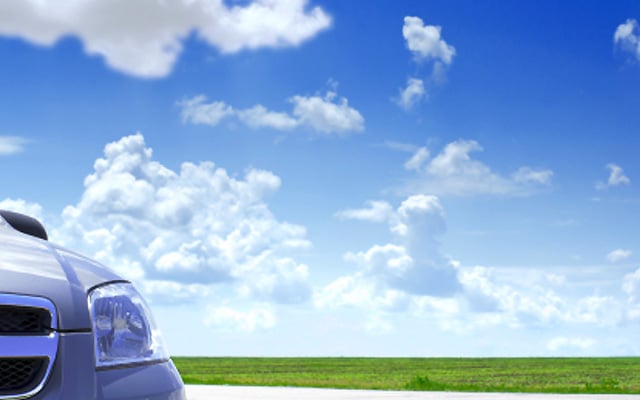Fuel consumption has a lot to do with the car you buy, but whatever you drive there are things you can do to save fuel, save money and cut pollution.
When 50 AA staff took part in an eco-driving trial a few years ago, driving normally for a week and then following our advice for a second week, they saved an average 10% on their weekly fuel bills. The best saved an impressive 33%.

Maintenance
- Get your car serviced regularly for best efficiency
- Always use the right specification of engine oil (check your handbook)
- Check your tyre pressures regularly and before long journeys – under-inflated tyres will make your car use more fuel
Before you go
- Save weight – extra weight means extra fuel so if you don’t need it, take it out
- Cut drag – roof-racks and boxes add to your fuel consumption. Pack carefully to reduce drag, or take it off.
- Don’t hang around – idling wastes fuel and your engine warms up more quickly when you're moving so don’t start the engine until you’re ready to go.
- De-icing – scrape ice in the winter rather than leave your car idling to warm up
- Plan your journey – getting lost wastes fuel. Check traffic news before you go too.
- Combine short trips – cold starts use more fuel so it pays to combine trips if you can.
- Walk or cycle – if you’re only going a couple of miles or so, do you really need to use the car?
Driving
- Smooth and gentle – drive smoothly, accelerate gently and read the road ahead to avoid braking unnecessarily. Decelerate smoothly by releasing the accelerator in time, leaving the car in gear.
- Keep rolling – stopping then starting again uses more fuel than rolling. Slow early for traffic lights or approaching a queue and you might not have to stop completely.
- Change up earlier – don't labour the engine but try changing up at an engine speed of around 2,000 rpm (diesel) or 2,500 (petrol). Since 2014 new car models have been fitted with a gear shift indicator to encourage use of the most efficient gear.
- Use your air-con wisely – at low speeds, air-con increases fuel consumption but at higher speeds the effect is less noticeable. Try opening the windows around town and save the air-con for high speed driving. Don't leave it on all the time but running it at least once a week helps keep the system in good condition.
- Cut down on the electrics – turn off your rear window heater, demister fan and headlights when you don't need them
- Stick to the limit – going faster uses more fuel. Drive at 70mph and you’ll use up to 9% more than at 60mph and up to 15% more than at 50mph. Taking it up to 80mph can use up to 25% more fuel than at 70mph.
Is it best to idle or switch off?
Unless your car has an automatic stop/start system, don’t switch off to save fuel unless your engine's warm, you expect not to move for 3 minutes or so (at a level crossing for example) and you know you’ve got a good battery.
Cars with 'stop/start' have up-rated components and systems to make sure the engine only stops if it will restart:
- Up-rated battery, starter motor and charging system.
- Many have a second battery to help protect sensitive electronics when restarting.
- Battery monitoring to disable stop/start if the battery is tired.
- A control system to restart as soon as the driver presses the clutch pedal (or releases the brake pedal on an auto)
- Monitoring of air-con, engine temperature, and electrical loads that could affect re-starting
- Monitoring the Diesel Particulate filter (DPF) if fitted
- Specially hardened engine bearings designed for a high number of engine start-ups
Coasting
It used to be quite common to try to save fuel by rolling downhill out of gear but it’s not recommended as you don’t have full control:
- You can’t suddenly accelerate out of a tricky situation.
- You lose engine braking and risk overheating your brakes.
- Coasting won't save you fuel these days either.
- Fuel and ignition systems are effectively combined and controlled by one Electronic Control Unit (ECU). When you take your foot off the accelerator the ECU cuts the fuel supply to the injectors anyway so there's nothing to be gained by coasting.
How much can you save?
If you want to see how much you can improve on your current fuel consumption and you’ve got an on-board computer that shows miles per gallon/mpg then t’s easy:
- Take a note of the overall average you're getting now
- Reset the computer and start recording a new average
- Try to compare similar periods of time – whole weeks or months say – and similar types of driving
To work out your average mpg without an on-board computer:
- Fill the tank and record the mileage
- Keep a record of any subsequent fuel purchases (you don't have to completely fill the tank again until you're ready to work out your mpg.
- Ideally go back to the same pump at the same garage you first filled the car and fill the tank again to the same level
- Divide the total mileage since the first fill by the total number of litres used and multiply by 4.546 to get miles per gallon
Example: If you've covered 1000 miles and used 101 litres of fuel, your average mpg = (1000/101)x4.546 = 45mpg)
11 January 2017
